The Legend of Heroes: Trails Through Daybreak II opens up about six months after the first game ended. Things have largely gone back to normal for the Arkride Solutions group, with most of Van's employees having spread to the four winds. Van's temporary peace is shattered when a mysterious serial killer appears and turns out to be a Grendel, the same kind of superpowered being that Van can turn into. A deadly first attempt to stop the new Grendel leaves Van dead … and reveals that the Genesis devices that Agnes has been collecting can turn back time in the event of a disaster. Given a second chance at life, Van and his friends now need to discover the truth about the Grendel and how they can stop it before all of Calvard is dragged into a new doomsday scenario.
Daybreak II's core issue is that it doesn't really feel like a sequel. In some ways, it feels more like a follow-up to Reverie than it does Daybreak, and while it eventually resolves plot issues from the first game, it takes a long while to get there and feels rather disconnected. It spends a lot more time following up plot beats from other Trails games than it does on anything from the first title, aside from Agnes' Genesis devices serving as a plot tool. If not for the fact that certain plot beats pay off, it very well could be a stand-alone adventure that stars the Arkride Solutions team. One of the party members from the last game doesn't even show up in this title, aside from some brief mentions.
This isn't helped by the fact that Daybreak II has what is probably the weakest villain faction in the franchise to date, despite the relatively strong showing last time. The reveal of the main villain's identity feels perfunctory and lacks impact. It also relies heavily on the ol' mind control cliché to the point of excess. There are some good moments, but few of them involve the actual bad guys, who are largely forgettable. The plot is resolved within one game, which is a huge relief after Cold Steel's series of cliffhanger endings, but there could've been more meat on those bones.
As mentioned, one of the big gimmicks in the game is the Time Leap mechanic, where death and disaster will trigger one of the Genesis devices and allow the Arkride team to hop back before the disaster occurs and try to subvert it. Unfortunately, this mechanic is also underbaked. Ninety percent of the time you use it, it boils down to "characters die, return to their last checkpoint, and undo the death." There's almost no flexibility or choice involved, so the mechanic feels repetitive. Whenever something dramatic happens, you know it's going to be instantly undone, and you frequently know that nothing is going to happen without at least one fake-out death. It drags down the experience because the game feels obligated to keep giving you new and increasing fake-out deaths to the point that it almost feels comical.
I like the idea of making things feel more consequential by showing what happens when you fail, but the characters are portrayed as inhumanly skilled, intelligent and capable — and then they suddenly die from car bombs, machine guns and simple traps. The lack of player interaction hurts the game; if the player could choose what feels right (and undo it later), it would feel better than the constant stream of forced failures.
There are also some parts of the story that feel incomplete. The morality system from Daybreak returns, but it feels tacked-on. It never impacts the story in a meaningful way, and the actual choices you make tend to be pretty dull when compared to the original game. The choices seem to boil down to "tell the police" or "don't tell the police." It feels included so you have it, and that's a disappointment after the strong implementation of the mortality system in the last game.
Despite the criticisms above, I still enjoyed Daybreak II as its own little Arkride adventure. The cast is very likable, and the game does a good job of balancing out the surprisingly busy cast without getting into the bloated territory of later Cold Steel titles. Mercifully, it also pares back a lot of the one-note jokes, so the characters don't call Van old at every opportunity. It's a solid way to have another adventure with fun characters, but it feels more like a side story than a sequel, and it doesn't leave the incredibly strong impression that the first entry did. It sometimes feels like it's spinning its wheels a bit.
The core gameplay follows the same loop as the first game. It's divided into chapters, with each chapter having its own collection of main story quests and side-quests. The only real change from how the first game handled things is that the story is divided into sub-chapters that follow different characters, rather like how Trails into Reverie did things. Aside from that, we're seeing basically the same structure as the first game, but that's not necessarily a negative.
Overall, Daybreak II's combat is an improvement over the original in pretty much every way. It's clear the developers took to heart the flaws with the original Daybreak's combat and found some creative ways to fix them without breaking what worked. It's a lot more fun to play, and I'd say it's the best combat system in a Trails game to date.
As in the first game, combat is divided into a real-time combat system and a turn-based combat system. Outside of the game's boss fights, you can swap between the two modes. Attacking enemies in real time lowers their health and stuns them, while swapping into turn-based mode lets you use special attacks and abilities.
The major improvements to the real-time system come from additional options. You can now do cross-combos that swap between different characters in your party after a narrow dodge, and you can also use Quick Arts magic spells outside of combat. It makes the moment-to-moment fighting feel more engaging and rewarding, and it adds enough extra punch to your attacks that players don't instantly feel the need to swap to turn-based combat the moment they stun an enemy.
The turn-based combat system is a lot more fun due to a number of small but significant changes. The first and largest change is that S-Crafts are now limited to one use per Boost phase, so spamming them is no longer a viable tactic. They are still powerful moves that your party will use a lot, but since they are so limited, you'll probably only use them two or three times during a big fight instead of every single round. In exchange, your party's combat abilities have also seen a nice boost, with more powerful and useful additions. Stun damage has been amplified, and stunning an opponent now lets you perform Ex Attacks, which are basically mini S-Crafts. It's critical to build a team that can reliably stagger foes and unleash massive amounts of damage to blow through enemy hit pools. As you progress and get more options, you'll find ways to deal hilarious amounts of damage, but overall, combat is more engaging than it in the original game because there are more options and variety.
If there's one complaint, it is that Daybreak II leans pretty hard on recycling — that is, going back to the same dungeons, bosses and locations from the first game. While there are some new encounters, the bulk of the game's boss fights are guys you've fought in the previous game. It's not so bad, but it's disappointing how many of the late game bosses are retreads from the last game. The final boss fight is pretty darn cool despite this, but it adds to the feeling of the game being a side-step than a step forward.
There are some new features. Borrowing again from Trails into Reverie, Daybreak II has a randomized dungeon called the Marchen Garten. You can enter this dungeon at any time and go along a small map of various dungeons, each of which has its own mini-objective, such as "Slay (x) large enemies" or "Destroy (x) items in the environment." Once you complete the objective, you can move on to the next one until you reach a boss. Much like the similar mechanic in Reverie, you also unlock a special currency that you can use to roll on a gacha-style loot box that contains rare items or cosmetics. You can also find a special item to power up your character's crafts.
Marchen Garten is fine but nothing exceptional. It feels like it's there to pad out the gameplay and provide an excuse to use all party members who are normally locked by the plot. There are several bonus characters (including some only available in the postgame), but I generally used characters I knew would be in my party. The improved gameplay made it more fun to play through than Reverie's version, but for the most part, it's just a contextless dungeon to add some extra fights to the game.
As expected, Daybreak II looks and sounds pretty much identical to the last game. While there have been some minor graphical updates, but not a lot has changed with the basic graphics. The cut scenes display a significantly greater confidence in what they can do within the engine, leading to some of the more dynamic cut scenes in the franchise. The music and voice acting are both quite good, but there are no real significant changes to either.
The Legend of Heroes: Trails Through Daybreak II is a case of one step forward and one step back. Mechanically, it's the best put-together Trails game to date, as it fixes the problems in the last game and introduces enough new mechanics so it's fun to play. It also retains and refines the likable cast. Unfortunately, the lackluster time travel mechanic and plot structure weaken the experience. It's still a fun game but ends up feeling weaker than its predecessor.
Score: 8.0/10
More articles about The Legend Of Heroes: Trails Through Daybreak II


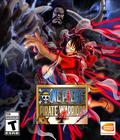
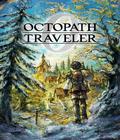
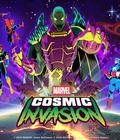

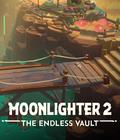
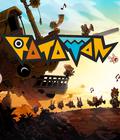
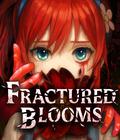

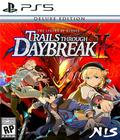 Return to the Calvard Republic and unravel the mystery of the crimson beast in The Legend of Heroes: Trails through Daybreak II.
Return to the Calvard Republic and unravel the mystery of the crimson beast in The Legend of Heroes: Trails through Daybreak II.








